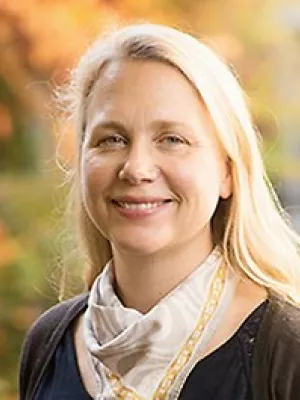
Helena Filipsson
Professor

Quantitative salinity reconstructions of the Baltic Sea during the mid-Holocene
Författare
Summary, in English
We reconstructed the past coastal environment of the Baltic Sea from c. 7300 to 3500 cal. a BP, with a focus on sea surface salinity (SSS). To quantitatively determine the SSS, two methods were employed: measurements of 87Sr/86Sr ratios in mollusc shells (SSSS r) and process length variations of dinoflagellate cysts Operculodinium centrocarpum (SSSpl). The SSSS r was ~6–7 between 6800 and 6400 cal. a BP, similar to modern conditions. Between 6000 and 3900 cal. a BP, SSSS r was consistently higher, ranging between ~9 and 13. Microfossils sensitive to salinity variations, such as Radiosperma corbiforum and Spiniferites spp., support the SSSS r estimate. In comparison with the SSSS r, the SSSpl values were consistently higher, with an average of ~14. We suggest SSSpl tend to overestimate salinity and are not as reliable as SSSSr. A multi-proxy approach, including analysis of microfossil, organic carbon content, C/N ratios and grain-size, allowed for a division of the study period into three zones (Zones I–III). Zone I (7300–6400 cal. a BP) is characterized by relatively O. centrocarpum and R. corbiforum concentrations, silt contents and C/N ratios, corresponding to the regional Littorina transgression maximum. Zone II (6400–3900 cal. a BP) is characterized by increased Spiniferites spp. and decreased R. corbiforum abundances, and by lowered C/N ratios and silt contents relative to Zone I. Zone III (3900–3500 cal. a BP) represents the start of the Post-Littorina Sea phase, indicating a shift to the modern Baltic Sea phase with decreased salinity.
Avdelning/ar
- Geologiska institutionen
- BECC: Biodiversity and Ecosystem services in a Changing Climate
Publiceringsår
2017-01-01
Språk
Engelska
Sidor
100-110
Publikation/Tidskrift/Serie
Boreas
Volym
46
Issue
1
Dokumenttyp
Artikel i tidskrift
Förlag
John Wiley & Sons Inc.
Ämne
- Oceanography, Hydrology, Water Resources
Status
Published
ISBN/ISSN/Övrigt
- ISSN: 0300-9483

